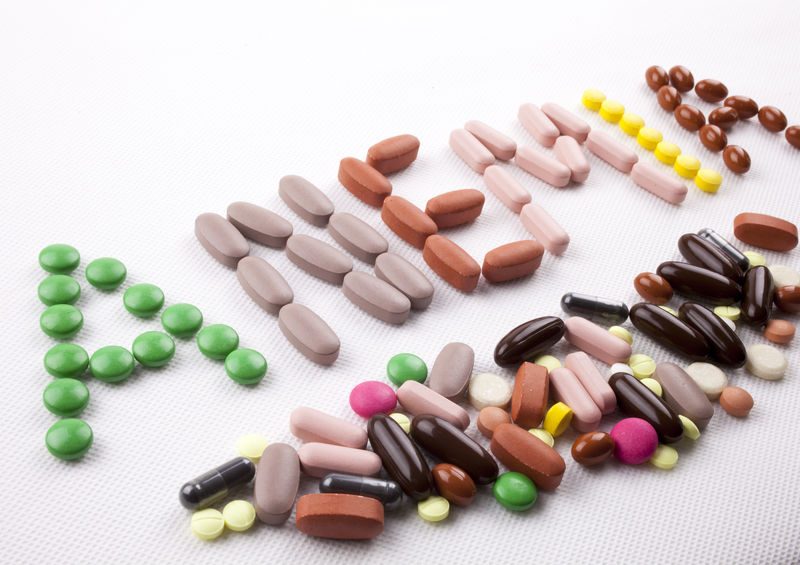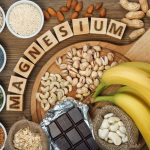
Understanding the correlation between anemia and exercise is important for personal trainers to grasp before working with an anemic client. Anemia is the term used to describe a condition in which the body produces fewer red blood cells than normal, rendering it unable to meet daily demands.
The Role of Iron
The human body has a specific way of responding to a variety of physical challenges, including endurance training. Intense exercise elicits an increase in the total amount of hemoglobin or iron-rich red blood cells. Over time, while the concentration of hemoglobin in the blood remains constant, the body is utilizing more iron.
When such a scenario leads the body to tap into its reserve iron stores, the cascade of potential health problems tumbles into action. According to Dr. Laura Garvican, a research scientist from the University of Canberra,”Iron does a lot more for you than just red-blood-cell production. It’s also involved in energy metabolism, immune function, and even brain processes.”
Iron is an essential element for blood production. Approximately 70 percent of the body’s iron is found either in hemoglobin or in muscle cells called myoglobin. Hemoglobin is essential for transferring oxygen from the lungs to other bodily tissues; myoglobin is then able to accept, store, transport, and release oxygen.
Six percent of our iron is essential for respiration and energy metabolism, also facilitating the synthesis of collagen and certain neurotransmitters. Iron is also involved in the maintenance of immune function. About 25 percent of the body’s iron is stored as a compound known as ferritin.
The average adult male body has a reserve of close to 1,000 mg of ferritin, which is an adequate amount to carry his body for about three years. Women, on the other hand, in large part due to menstruation, have only about 300 mg of excess ferritin, which is sufficient to carry her body for only 6 months.
When iron intake is consistently less than adequate, ferritin becomes depleted, with the direct effect being a decrease in levels of circulating hemoglobin. Severe iron depletion produces the condition known as anemia.
The Effects of Iron Supplementation
In 2011, results of a study undertaken by researchers in Switzerland illustrate the role of ferritin (iron) in the body’s energy mechanisms. The experiment identified 90 female subjects suffering from unexplained fatigue and divided them into a sample and a control group.
All of the participants exhibited hemoglobin levels within the normal range but presented with diminished levels of ferritin. While the control group received an injection of a placebo substance, those in the sample group received injections of iron supplements. Eighty-two percent of the subjects who started the study with the lowest ferritin levels reported reduced fatigue after receiving iron, compared to just 47% in the placebo group.
A subsequent study appearing in the Canadian Medical Association Journal demonstrated similar results. A test group of 198 women who reported unexplained fatigue and low ferritin levels found improvements upon receiving oral iron supplementation.
Both of these studies support the belief held by the medical community that individuals with perfectly normal hemoglobin stores, whether they are athletically inclined or more sedentary, might still exhibit negative effects of low iron if their underlying reserves have been diminished or depleted.
Such a scenario might be brought about as a result of nutritional deficiencies, or chronic illnesses such as leukemia/bone marrow cancers, HIV or sickle cell abnormalities. Dr. Garvican’s explanation is that the human body preferentially uses whatever iron is available in an effort to optimize hemoglobin levels; if iron reserves are limited, other bodily processes will be shortchanged.
Bear in mind, however, that 2-3% of iron deficiencies may be attributed to malabsorption dysfunction seen with issues like celiac disease and other GI disorders; oral supplementation will be ineffective and perhaps even harmful. Medical guidance will be necessary.
Identifying the Anemic Client
Without any prior knowledge of a client’s health history, trainers are at a disadvantage when trying to create safe and effective workouts. This is yet one more reason to conduct a thorough assessment prior to accepting new clients, since most will disclose chronic health issues that may interfere with a training protocol.
Individuals suffering from anemia easily fatigue after engaging in light to moderate exercise, rendering the completion of training sessions very challenging. Such exhaustion may be accompanied by irritability, dizziness, leg cramps, and/or an inability to catch one’s breath.
Armed with the knowledge of potential symptoms, trainers can keep a vigilant eye out for the appearance of pale skin, cold hands, and feet, or client complaints of headaches and irregular heartbeats. Clients living with anemia appreciate being informed that their recovery time post-workout may be lengthened, along with potentially experiencing exacerbated muscle soreness.
Can Exercise Cause Anemia?
Despite physical activity being touted as a healthy way of life, clients who regularly engage in intense exercise bouts may actually place themselves at a higher risk for developing anemia. Researchers at Florida State University published a study in the International Journal of Sport Nutrition and Exercise Metabolism suggesting that exercise might induce a blocking effect, inhibiting the body’s ability to absorb iron.
Several conditions have been known to induce iron loss during exercise. Mechanical forces, such as a heavy foot strike (blood cells breaking as a result of running), can lead to exercise-induced hemoloysis. Iron loss often accompanies excessive sweating during extremely intense training. Injuries substantial enough to initiate the body’s immune response are a catalyst for inflammation, adding to the potential of decreased iron absorption.
Can Exercise Help Anemia?
Recent research performed at the Ohio State University Medical Center indicates that regular physical exercise can lead to improvements in anemia, most notably by helping to offset chronic fatigue. However, performing the right kind of physical activity is key. Endurance (aerobic) exercises promote blood cell formation, a process known as hematopoiesis; more blood cells equal an increase in hemoglobin.
Program Design for Anemic Clients
The primary goal of any exercise prescription for an anemic client is to improve his level of endurance, maximizing the benefits while diminishing any risks of further contributing to his already delicate physical condition. Choose activities that the client enjoys and will participate in on a regular basis. Walking, dancing, biking, and swimming are among the more commonly suggested modes of movement.
If you take on a client whose fitness level is relatively low, it is prudent to start with short training sessions of 10 to 15 minutes, gradually increasing workouts by 5 minutes every 2-4 weeks. If the client responds well, aim for a goal of 30 – 60 minutes, 3-4 days each week.
At least twice a week, a strength-training program can be introduced. A safe starting place is offering 1-3 sets of exercises for the major muscle groups, with 10 to 15 repetitions per set.
Exercise Precautions
The anemic client can be coached to understand what fatigue feels like in his own body, thereby knowing when not to push himself too hard when exhaustion sets in. Frequent breaks can help restore energy in the middle of workouts and allow the body to regain strength. Once again, remind the more athletic client to prepare for increased muscle soreness due to an excess of lactic acid buildup in the bloodstream.
Individuals living with chronic anemia abstain from exercise in the presence of chest pain. Anemia can sometimes bring on rapid heart rates or a dangerous irregular heart rhythm.
High-intensity exercise coupled with dehydration may increase the risk of a sickle cell crisis. Trainers might be proactive in moderating a client’s intensity level, making sure he remains within his established safe target heart-rate zone.
The Nutritional Angle
Iron is an essential nutrient, which means the body needs to obtain it from the diet. Insufficient consumption can lead to iron deficiency anemia. The US RDA recommendations for iron are 1.3 to 1.7 times higher for athletes than non-athletes.
Vegetarian athletes are encouraged to consume almost twice the US RDA for non-athletes and meat-eaters. It is not difficult to envision how a lack of dedication to a proper nutritional plan can quickly turn into a potentially harmful situation.
Dietitian Khushboo Sahijwani says, “About 20% of women, 50% of pregnant women, and 3% of men do not have enough iron in their bodies. The solution in many cases is to consume more foods high in iron.” While many personal trainers are not registered dietitians, it is not outside our scope of practice to urge anemic clients to work towards coupling their fitness plan with an equally balanced diet, one which encourages satisfactory amounts of carbohydrates, proteins, and essential fatty acids as well as an adequate supply of foods rich in iron.
Vegetarians can derive their non-animal iron sources from beans, lentils, spinach, and other leafy greens. Adding sources of vitamin C, such as oranges and tomatoes, to a vegan/vegetarian diet helps increase the body’s ability to absorb iron from plant-based foods.
Bringing it All to the Client with Anemia
A long-term career in the fitness industry has taught many of us that a “cookie-cutter” approach to program design simply will not work for the majority of clients. Those living with anemia are no exception. By understanding the factors contributing to this condition, as well as the ramifications of intense exercise, we can safeguard and empower our anemic clients to achieve their fullest and fittest lives.
References
https://www.medscape.com/viewarticle/719391
https://www.livestrong.com/article/529790-does-exercise-help-anemia/
https://breakingmuscle.com/healthy-eating/what-athletes-need-to-know-about-iron-deficiency
/www.fergon.com/exercise-precautions-anemia/
www.fergon.com/iron-deficiency-and-exercise-can-exercise-lower-your-iron-levels/
www.fergon.com/can-low-iron-cause-muscle-pain-and-soreness/
https://www.livestrong.com/article/400398-exercising-while-anemic/
fitnesssolutionsplus.ca/blog/low-iron/
www.thehealthsite.com/diseases-conditions/diet-and-fitness-guide-for-anemic-patients/
https://www.ncbi.nlm.nih.gov/pubmed/1406203
https://journals.lww.com/acsm-healthfitness/Fulltext/2010/09000/Iron_and_Athletic_Performance.11.aspx
https://journals.lww.com/acsm-healthfitness/Fulltext/2010/09000/Iron_and_Athletic_Performance.11.aspx
https://www.livestrong.com/article/467034-can-exercising-affect-anemia/
www.curejoy.com/content/exercise-to-increase-hemoglobin/
https://www.livestrong.com/article/347606-exercise-precautions-hemoglobin-levels/
https://www.ncbi.nlm.nih.gov/pmc/articles/PMC4408516/
https://www.ucsfhealth.org/education/hemoglobin_and_functions_of_iron/







